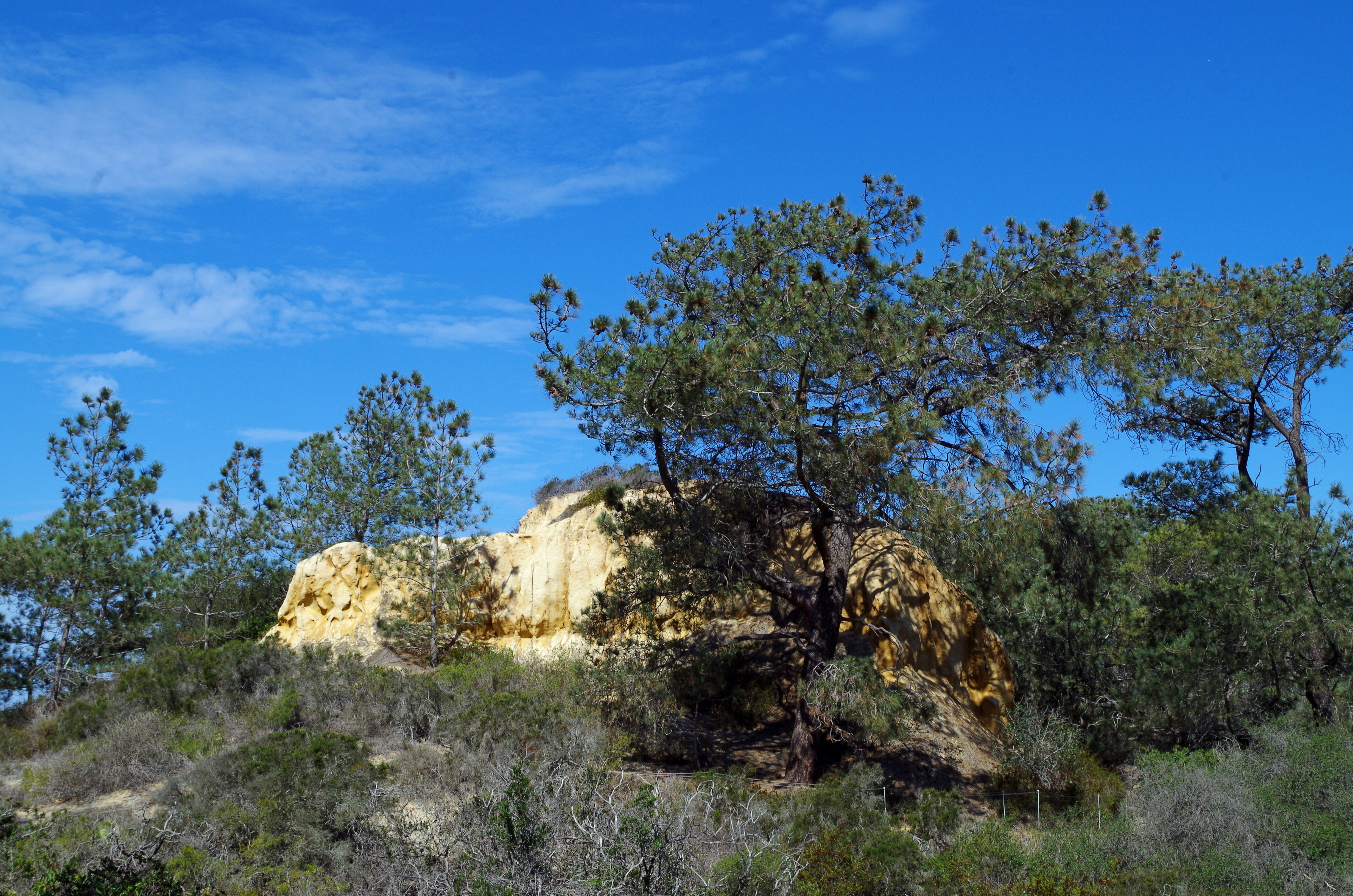
Torrey Pine
Pinus torreyana ssp. torreyana
Pinus torreyana ssp. torreyana
Photo Credit: Patricia Gordon-Reedy
| Historically present | |
| Between 2000 and | |
| Last 10 years |
Only two natural populations: the mainland population in and around Torrey Pines State Reserve (TPSR) and Santa Rosa Island population off the coast of southern California [1].
There are 176 acres of Torrey pine forest in the MSPA in MUs 6 and 7, of which 171 acres are conserved. There is 1 acre in MU6 that is not conserved and there are 175 acres in MU7 (171 acres conserved).
None [3].
Sandstone habitats in closed-cone coniferous forest and chaparral [2]. Elevation range is 30-160 meters. Dependent on daily fog from the ocean in the afternoon [4].
Pinaceae family [2].
Perennial evergreen tree [2]. In 2006, the population was 5,394 with an age structure of of 71% adults, 16% sub-adults, 8% saplings, and 5% seedlings [5]. A large, mature tree population, with infrequent seedlings and saplings [6; cited in 1]. Stand population varies between stands due to patchy juvenile recruitment [5]. Stand age will likely increase, given the past rate of seedling establishment and survival [7; cited in 1].
Cones are pollinated from January to March. Reach maturity in the summer two and a half years after pollination. Seed dispersal begins in September after cone-ripening [8].
Obligate seeder [2]. Facultative seral species. Infrequent fire may enhance regeneration due to substantial seed drop following a crown fire [9, 6; both cited in 1]. Seedling establishment increases with fire [1], due in part to the serotinous cones and delayed seed dispersal [5, 9; both cited in 1]. Vestigial wings make the seeds unlikely to disperse far from the parent tree (less than 4 meters) [10].
Alteration of fire regimes, drought, climate change, air pollution, invasive plants, and human disturbance [11]. Encroaching urbanizing outside of TPSR [4]. Fragmented and declining population is vulnerable to perturbations.
The IUCN recommends growing Torrey pines more widely as an ex situ backup population [4].
[1] Esser, L. L. 1993. “Index of Species Information: Pinus Torreyana.†Fire Effects Information System. http://www.fs.fed.us/database/feis/plants/tree/pintor/all.html.
[2] California Native Plant Society. (2016). Pinus torreyana. Retrieved December 11, 2016, from http://www.rareplants.cnps.org/detail/1379.html
[3] Sproul, F., T. Keeler-Wolf, P. Gordon-Reedy, J. Dunn, A. Klein, and K. Harper. 2011. Vegetation Classification Manual for Western San Diego County. First Edit. San Diego, CA.
[4] Farjon, A. (2013). Pinus torreyana. Retrieved December 11, 2016, from http://www.iucnredlist.org/details/42424/0
[5] Evarts, B. 1986. “Torrey Pines: Resurrection or Remission.†Environment Southwest 514: 3–8.
[6] Zedler, P. H., Gerald Schneid, and Carla Scheidlinger. 1987. “Fire in the Ecology and Management of Torrey Pine (California).†Restoration & Management Notes 5 (2): 88–89.
[7] McMaster, G. 1982. “Fire in the Ecology and Management of Torrey Pine (Pinus Torreyana) Populations.†In Proceedings of the Symposium on Dynamics and Management of Mediterranean-Type Ecosystems, edited by Conrad Eugene and Walter C. Oechel. San Diego, CA: USDA Forest Service, Pacific Southwest Forest and Range Experiment Station.
[8] Esser, L. L. 1993. “Index of Species Information: Pinus Torreyana.†Fire Effects Information System.
[9] McMaster, G. S. 1980. “Patterns of Reproduction in Torrey Pine (Pinus Torreyana).†San Diego State University.
[10] Johnson, M., S. B. Vander Wall, and M. Borchert. 2003. “A Comparative Analysis of Seed and Cone Characteristics and Seed-Dispersal Strategies of Three Pines in the Subsection Sabinianae.†Plant Ecology 168: 69–84. doi:10.1023/A:1024470224134.
[11] Remeika, P. 1976. “Torrey Pines.†Environment Southwest 475: 10–12.